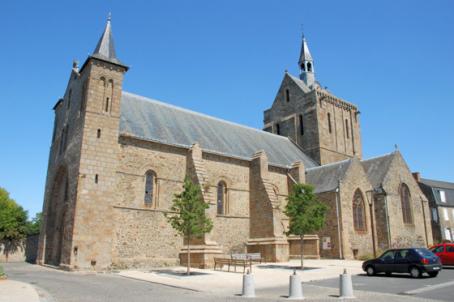Dol-de-Bretagne Cathedral

The most important part of the building was erected during the 13th century and required more than sixty years of work. Because of its geographical position, it will adopt the Norman and English practices of religious construction. Charm of the mixture of Romanesque and Gothic styles, charm of the contrast with a luminous interior with splendid glass windows. The choir is surrounded by 10 rectangular-shaped chapels, which shows a strong English influence.
About this building
The cathedral of Dol, founded in the 9th century, was burnt down in 1203 by the troops of Jean Sans Terre. The present building, which had to be started shortly afterwards, is a fine example of Gothic architecture of Norman influence. The reconstruction began with the nave, continued with the transept and finished around 1265 with the choir. An important campaign of works in the 14th century saw the construction of the crossing tower, the large south porch, the chapter house and the chapel with cut-off sides erected to the east of the choir. The two upper floors of the south tower date from the 15th century, as do the modifications to the south porch. The north tower, begun in 1520, was never completed, and the west façade was altered in the 16th and 17th centuries.





